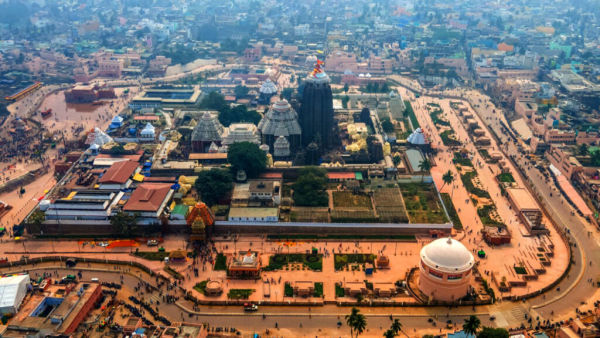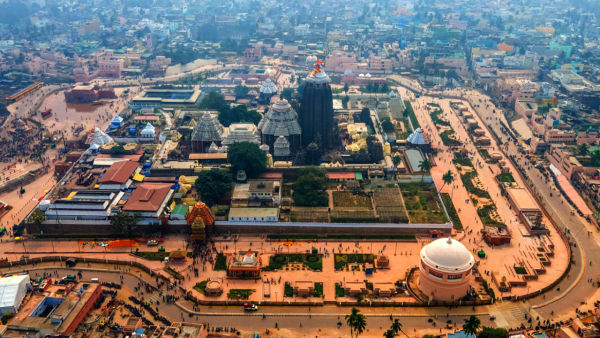

New Delhi: Preparations are in full swing for the Puri Rath Yatra. It is a chariot festival and is held annually. This year, the yatra will begin on Friday, June 27. It is one of the oldest and largest Rath yatra. It is celebrated on the bright half of the lunar month of Asadh, which is, according to the Gregorian calendar, June or July.
The Yatra is held in Puri, Odisha and is associated with Lord Jagannath (Lord Vishu’s form). During the Rath Yatra, the three gods – Jagannath, his brother Balabhadra, and his sister Subhadra – are pulled by many devotees in three big wooden chariots along the main road to the Gundicha Temple. They stay there for a week before returning to the Jagannath Temple. This return journey is called the Bahuda Yatra. On their way back, the three gods stop at the Mausi Maa Temple (Aunt’s home) to enjoy a special pancake called Poda Pitha, which is said to be their favourite. After staying for seven days, the gods go back to their home.
As several devotees from across the world will visit Puri for the Rath Yatra, there are several temples one can visit.
The Jagannath Temple in Puri is renowned for its distinctive architecture, profound religious significance, and the annual Rath Yatra festival. The temple features a tall structure that casts no shadow and has a daily ritual of changing the temple’s flag. It is one of the Char Dham pilgrimage sites and is famous for its detailed carvings and sculptures. The temple hosts the deities Jagannath, Balabhadra, and Subhadra, who play a vital role in the Rath Yatra festival.
Why visit: This 12th-century temple is dedicated to Lord Jagannath (a form of Vishnu) and is the starting point for the massive chariots of Jagannath, Balabhadra, and Subhadra during the Rath Yatra.
The Loknath Temple, also known as Shri Lokanatha Mandira, is a significant Hindu temple in Puri, Odisha, dedicated to Lord Shiva. It is close to the Jagannath Temple. A key feature of this temple is the submerged Shivalinga, which is visible only once a year during the Pankoddhar Ekadashi festival, three days before Shivaratri.
Why visit: Dedicated to Lord Shiva, the Shivalinga here is believed to have been installed by Lord Ram and is underwater for most of the year.
Gundicha Temple is located in Puri, Odisha. It is important because it is the destination for the annual Rath Yatra of Puri. This temple remains empty most of the year. Still, during the Rath Yatra festival, the images of Jagannath, Balabhadra, and Subhadra occupy it for seven days (nine days, including the start and end of the Yatra).
Why visit: This temple is where the chariots stop during the Yatra. Lord Jagannath and his siblings stay here for seven days before returning.
The Alarnatha Temple is an ancient site where Lord Vishnu appears as Alarnatha. This temple holds historical and mythological significance, as it is believed that Lord Brahma visited to worship Vishnu during the Satya Yug. Alarnatha Temple remains a peaceful place for pilgrims.
Why visit: Located 25 km from Puri in Brahmagiri, this temple is a key pilgrimage site during the Anavasara period when Jagannath is not available for darshan.
This small temple is dedicated to Goddess Ardhashini. As per Jagannath mythology, when Goddess Lakshmi Devi left the Shri Mandira, Jagannath and Balabhadra became impoverished and went out begging. During this time, Subhadra Devi stayed with Mausi Maa (her maternal aunt).
Why visit: Located on the Rath Yatra route, this temple is where the deities stop to rest and receive offerings.
This temple is where Shiva fought with Yama and gave Maharishi Markandeya the boon of immortality. The original temple dates back to ancient times, but the current structure was built in the early 20th century.
Why visit: This ancient Shiva temple, situated near Swargadwar, is associated with the sage Markandeya.
The Vimala Temple, also known as Maa Bimala Deula, is dedicated to the goddess Vimala or Bimala and is located within the Jagannath Temple complex in Puri, Odisha. It is considered one of the holiest temples dedicated to the Hindu Goddess.
Why visit: Situated inside the Jagannath Temple complex, it is one of the Shakti Peethas and is essential to the sanctity of the Mahaprasad.